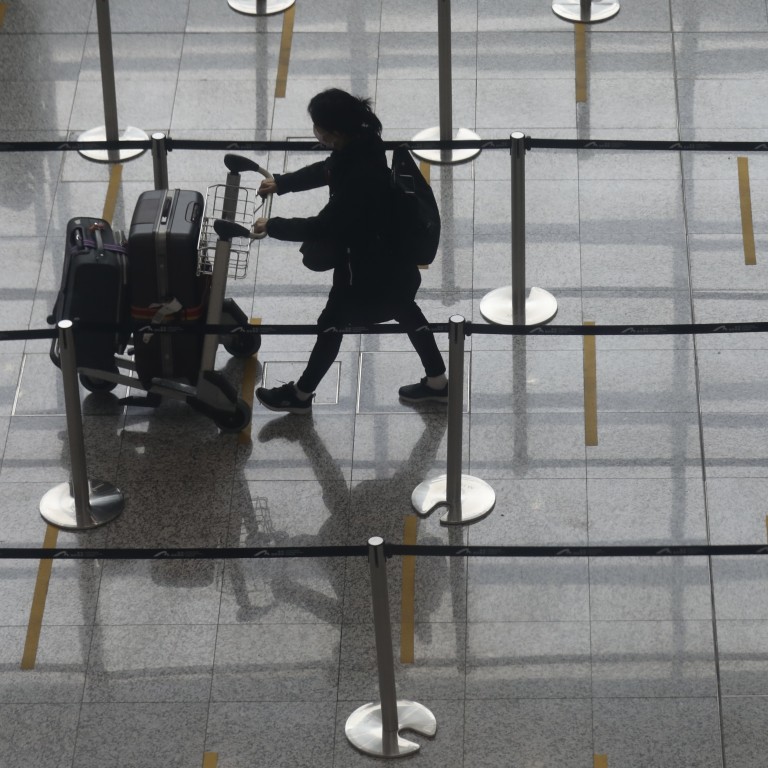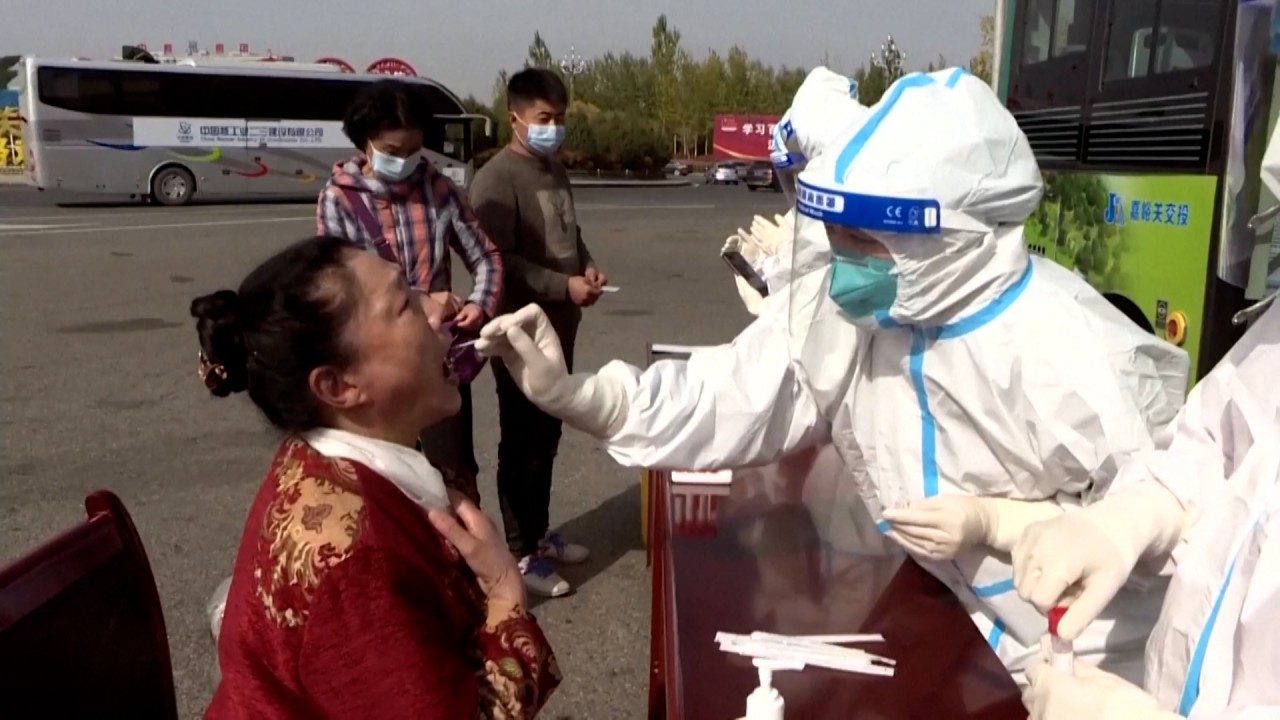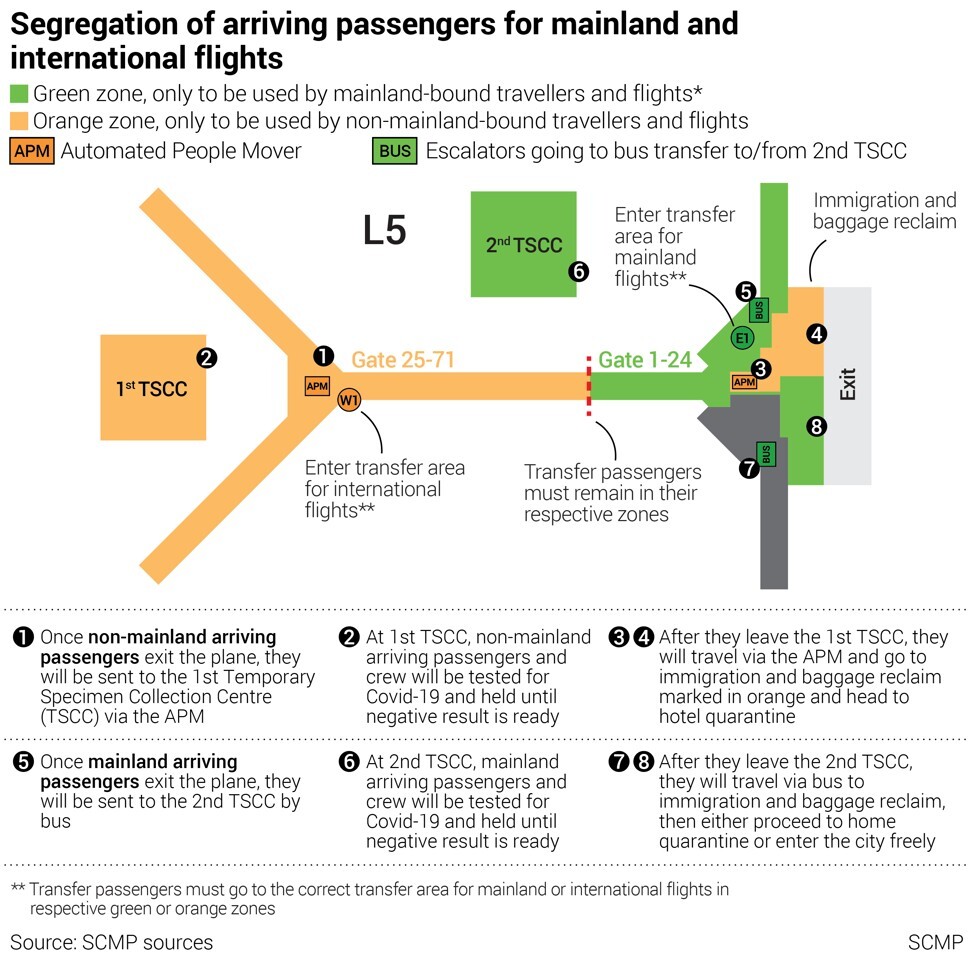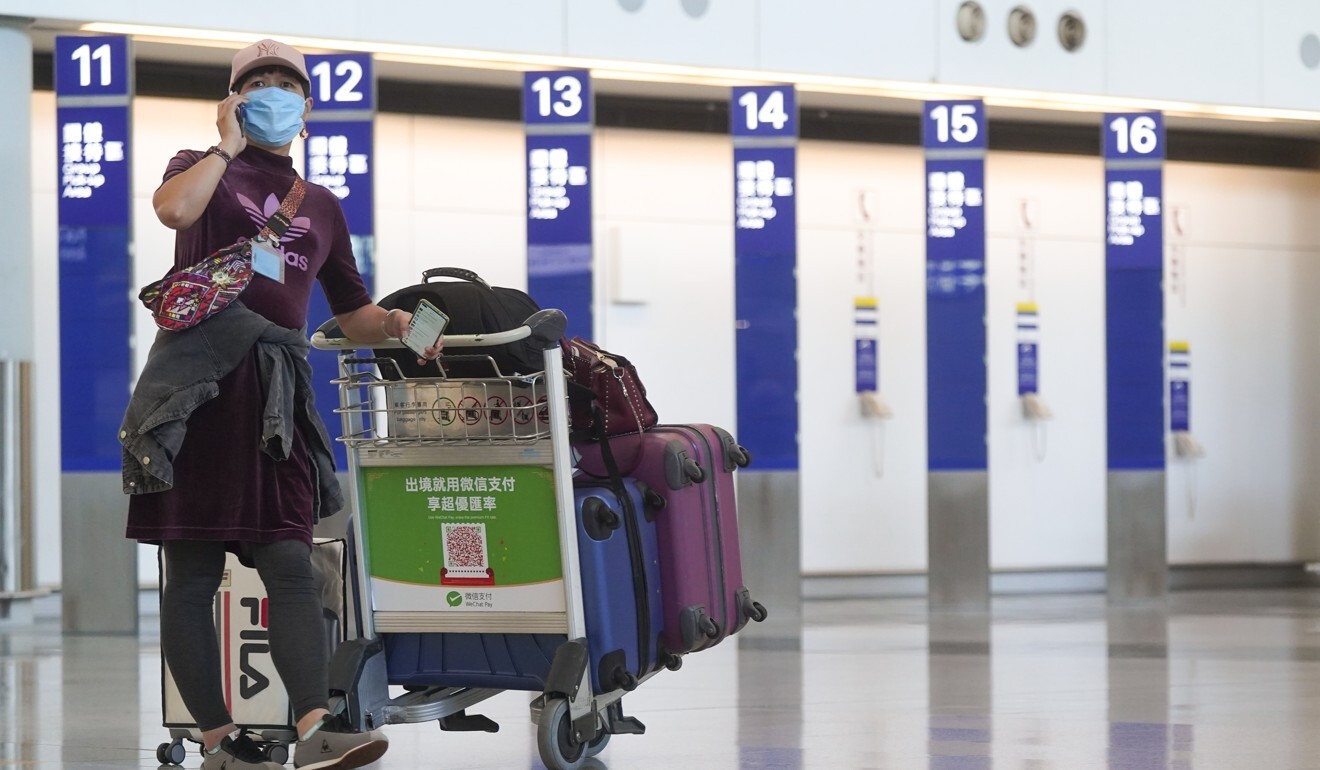
Exclusive | Coronavirus: Hong Kong airport ‘plans passenger segregation’ to curb cross-infection, part of push to reopen border with mainland China
- Two separate zones, one catering for passengers of mainland flights and the other for the rest, would be established under the proposal
- Move is part of Hong Kong’s zero-Covid strategy aimed at achieving closer alignment with Beijing and restoring cross-border travel
Hong Kong airport officials plan to segregate passengers on mainland China flights from other international travellers in an unprecedented move to prevent cross-infection and build a stronger case for reopening the city’s border with the rest of the country, the Post has learned.
The proposal to divide Hong Kong International Airport into two zones also involves assigning staff to either side with no mixing allowed during working hours, according to sources who were briefed last week on the plans.
They said the finer operational details were still being finalised but the airport was set to confirm the segregation arrangements by November 10 with a view to implementation soon after.

01:00
Chinese mainland reports 23 locally transmitted Covid-19 cases
The move is part of Hong Kong’s tougher zero-Covid strategy aimed at achieving closer alignment with Beijing – prioritising the return of two-way travel with the mainland ahead of opening up to the rest of the world.
Addressing the matter, the Airport Authority only said it “constantly reviews preventive measures according to the government’s latest guidelines”.
The Food and Health Bureau, meanwhile, said the government was reviewing the arrangements at the airport “so as to further enhance the infection control measures”.
“This includes possible further segregation of groups of passengers … arriving/travelling to and from places of different risk levels,” it added.
Professor David Hui Shu-cheong, a government pandemic adviser, said the airport’s plan was a good way to reduce cross-infections.
“[Mainland officials] expressed concern about Hong Kong’s border control. So Hong Kong has to do something to tighten the measures to make the mainland feel more confident about the border reopening,” he said.

Hong Kong was told it must not introduce extra infection risks to the mainland if the border was to reopen, according to Chief Secretary John Lee Ka-chiu, who has been leading negotiations for the city on restoring travel links.
On Tuesday, health authorities confirmed two imported coronavirus cases, bringing the local tally to 12,349, with 213 related deaths. The new infections involved an arrival from the Philippines, and another who travelled through Europe, visiting Spain, Greece, Portugal and Turkey. Fewer than five people tested preliminary-positive.
‘Business travel gets priority’ if Hong Kong-mainland China border reopens
Hong Kong on Monday confirmed that senior business executives arriving in the city, along with most diplomatic personnel, would from November 12 be stripped of quarantine-exemption privileges as part of the effort to keep imported infections at bay.
To complete the airport separation, which is focused on segregating flights arriving from the mainland, a second Covid-19 testing centre would be established to allow travellers arriving from across the border to separately undergo coronavirus screening and immigration checks, as well as to collect their baggage once they step off their planes.

Passengers arriving from the mainland are currently tested in the same facilities as those from the rest of the world, though they queue in separate lines.
Similarly, transit passengers for mainland and non-mainland flights would be kept apart and sent to their designated zones to ensure travellers did not mix.
Hong Kong businesses ask: will quarantine shift convince Beijing to reopen?
For departures, airport boarding gates 1 to 24 would be designated for mainland flights only, while gates 25 to 71 would be allocated for all others.
A line of no return has also been marked for passengers flying to destinations not on the mainland. Once passengers move beyond gate 24, they cannot turn back.

Professor Benjamin Cowling, head of epidemiology and biostatistics at the University of Hong Kong, welcomed the airport’s more “stringent” pandemic plans.
“I think these plans to segregate arriving persons from different locations are very sensible, since the cross-boundary travellers will have a much lower risk of Covid compared to those arriving from overseas,” he said.
Should the government succeed in its efforts to have the border reopened, he added, it would pave the way for a rapid expansion of flights.
“I am not sure Hong Kong can be an aviation hub while quarantine is required for international arrivals, but there should be a lot of demand for mainland flights once quarantine-free cross-boundary travel restarts,” Cowling said.
Hong Kong to limit quarantine passes to handful of critical groups from November 12
Before the pandemic, Cathay Pacific and its now defunct sister airline Cathay Dragon operated 368 flights to the mainland. Cathay now only flies a fraction of its previous flights to a handful of mainland cities.
Hong Kong stands alongside the mainland and Macau as the world’s only major jurisdictions sticking to a zero-Covid strategy, requiring inbound travellers to quarantine in a hotel for 21 days as the rest of the world pursues a policy known as “living with the virus”.
Aircrew managed to keep hold of their quarantine exemptions – to the relief of Cathay Pacific – following Monday’s paring back of the privileges. That allows flights to continue running at current levels, but other stringent border control measures continue to damage the city’s aviation sector.
From November 12, only a handful of groups deemed essential to Hong Kong’s operations will still be allowed entry without undergoing mandatory isolation, such as cross-border truck and bus drivers, air and cargo ship crew, and government officials.
The mainland, meanwhile, is still coping with a fresh outbreak of the coronavirus, and on Monday the country reported 59 local cases – the most since October 17.
Pandemic adviser Hui suggested that any reopening of the border was unlikely until February, adding that the airport and the city’s renewed zero-Covid efforts signalled authorities were “sticking to more stringent measures for the foreseeable future”.
“Hopefully when most countries administer booster doses, the outbreak situation should improve, and there can be a time when these measures can be adjusted,” he said.
Mainland authorities have been very sensitive about Covid-19 outbreaks stemming from airports after a cluster at Nanjing’s aviation hub spread to 20 cities across the country, through cross-infection from international and domestic flights. Fifteen officials, including the city’s vice-mayor and health chief, were punished for the wave in July.

